Straddling the border between Nagaland and Manipur, perched at 2450 metres above sea level, lies a place straight out of the pages of a Tolkien novel. Largely unknown outside of the North East, Dzükou Valley’s unreal landscape fascinated us from the first time we saw pictures of it whilst researching our Nagaland trip. It was not to be missed, and we planned our time in Kohima, to be able to undertake the journey.

The added bonus (or not) of visiting Dzükou is that the valley can only be accessed via a four hour trek up through the forests south of Kohima, which means that it is devoid of the rush of tourists and picnickers one would find in similarly scenic spots. The valley can also be reached through a shorter but harder one hour climb, but we chose the slightly longer but apparently easier route. One will have to do the other to compare, perhaps some day!
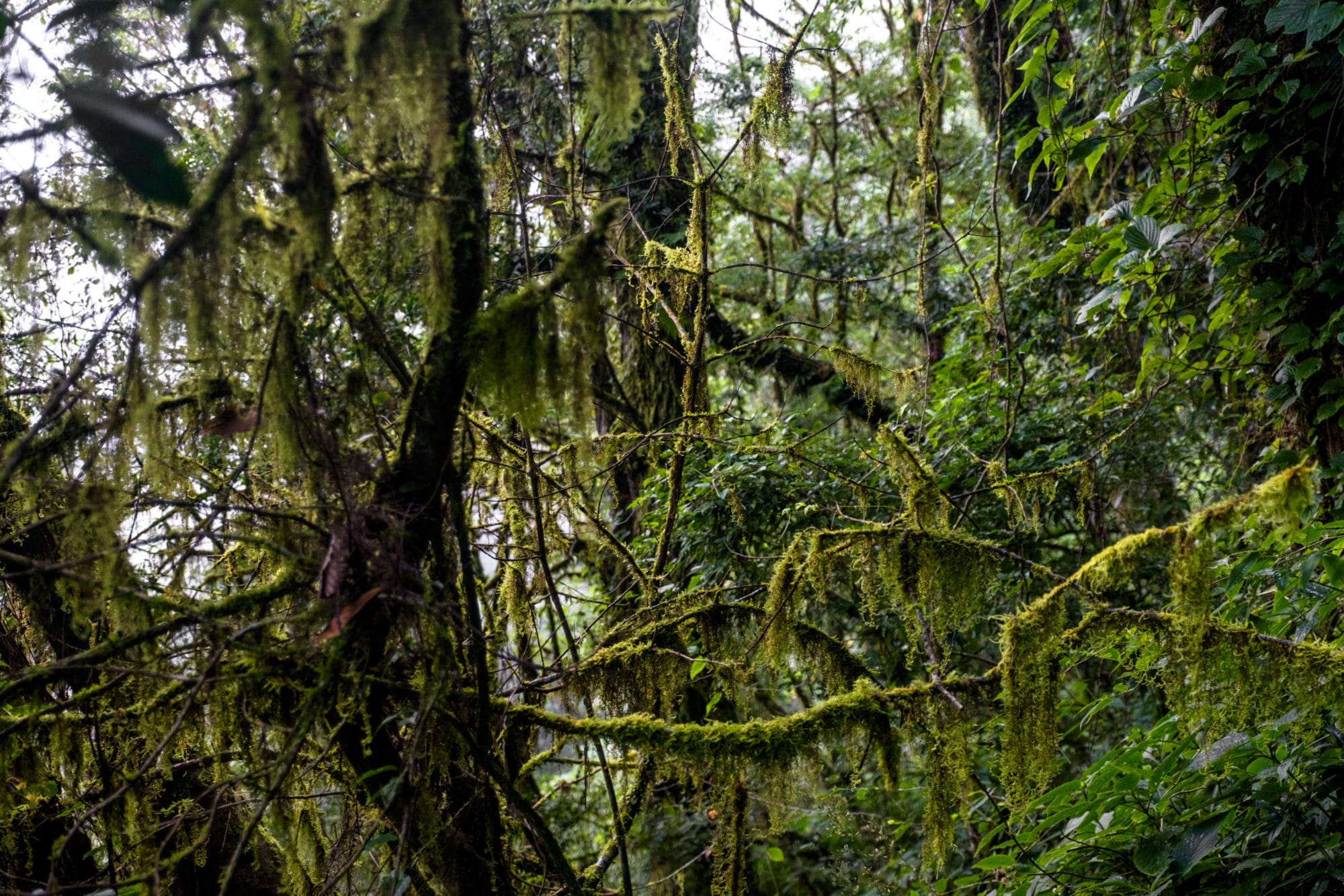
So a couple of days after we reached Kohima we set off bright and early to the village of Viswema which is the base from where the trek to Dzükou starts. Whilst you can choose to walk up all the way from Viswema, we chose to drive up to the point from where the climb through the forest begins, as we were planning to do the Dzükou trek and return to Kohima the same evening, which meant a good 8 hours of walking.
Now don’t get us wrong, the trek up to Dzükou is not really that difficult, but for our city legs, the 1200 odd rocky steps up to the valley could well have been double. As we huffed and puffed our way up, our smiling guide Nicholas, in sharp contrast, seemed like he was out for a walk in the park. Of course Nicholas is all of 20, compared to our bordering-on-middle-aged 30 something, and we cursed him roundly for barely breaking a sweat, while we worked off the deliciously fatty Pork and duck curry from the previous night. It took us the better part of 2 hours (Nicholas could probably do it is 45 minutes) to climb up the point from where you start the next part of the trek, through a narrow path on the side of the hill that goes to the base camp. Though we were not yet in Dzükou Valley, the view was already breathtaking. From the top we looked down through the clouds upon the scene that makes up the typical Nagaland landscape: a tapestry of craggy green hills punctuated by villages and yellow – green step paddy fields; a familiar visual we were to grow fond off in the coming weeks.
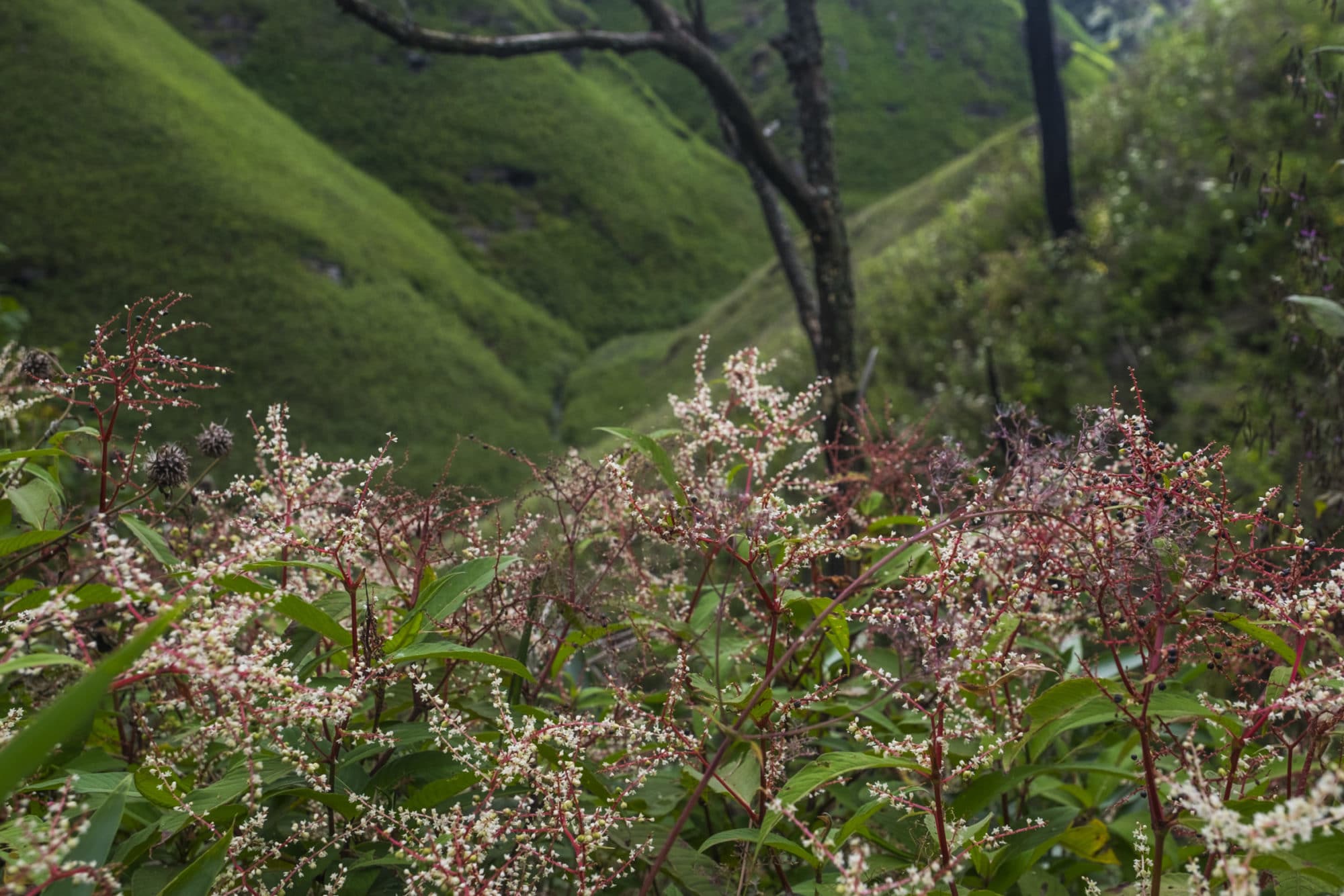
This view was too good to waste and a the perfect spot to dig in to our breakfast of bread, bananas and slightly runny boiled eggs, washed down with lovely, chilled stream water. Suitably rejuvenated and secure in the knowledge that the remainder of the walk was mostly along flat land, we set off with renewed energy towards the Dzükou base camp. The base camp incidentally, has a couple of covered structures where you can roll out a sleeping bag and spend the night. If time is not off essence, then we suggest spending the night and returning the next day, the sunrise will be nothing short of phenomenal.
And what a beautiful walk it was, through a narrow path cut from the side of the hills, with tall shrubs and wild flowers of all types and colours on both sides. On the left side of the path, down below, meandering along slowly, is the stream from which Dzükou derives its name, which in Angami literally translates to cold water. There are 16 major tribes in Nagaland, and the Dzükou Valley falls in the region inhabited by the Angami tribe. As we walked along the path, in some parts splashing through streams and pushing through the thicket, Dzükou slowly began to emerge. The 5 odd kms walk is less than arduous and made infinitely more pleasurable by the wondrous landscape which seems straight out of a fairy tale. Or perhaps fairy tales were made on the sight that unravelled before us.
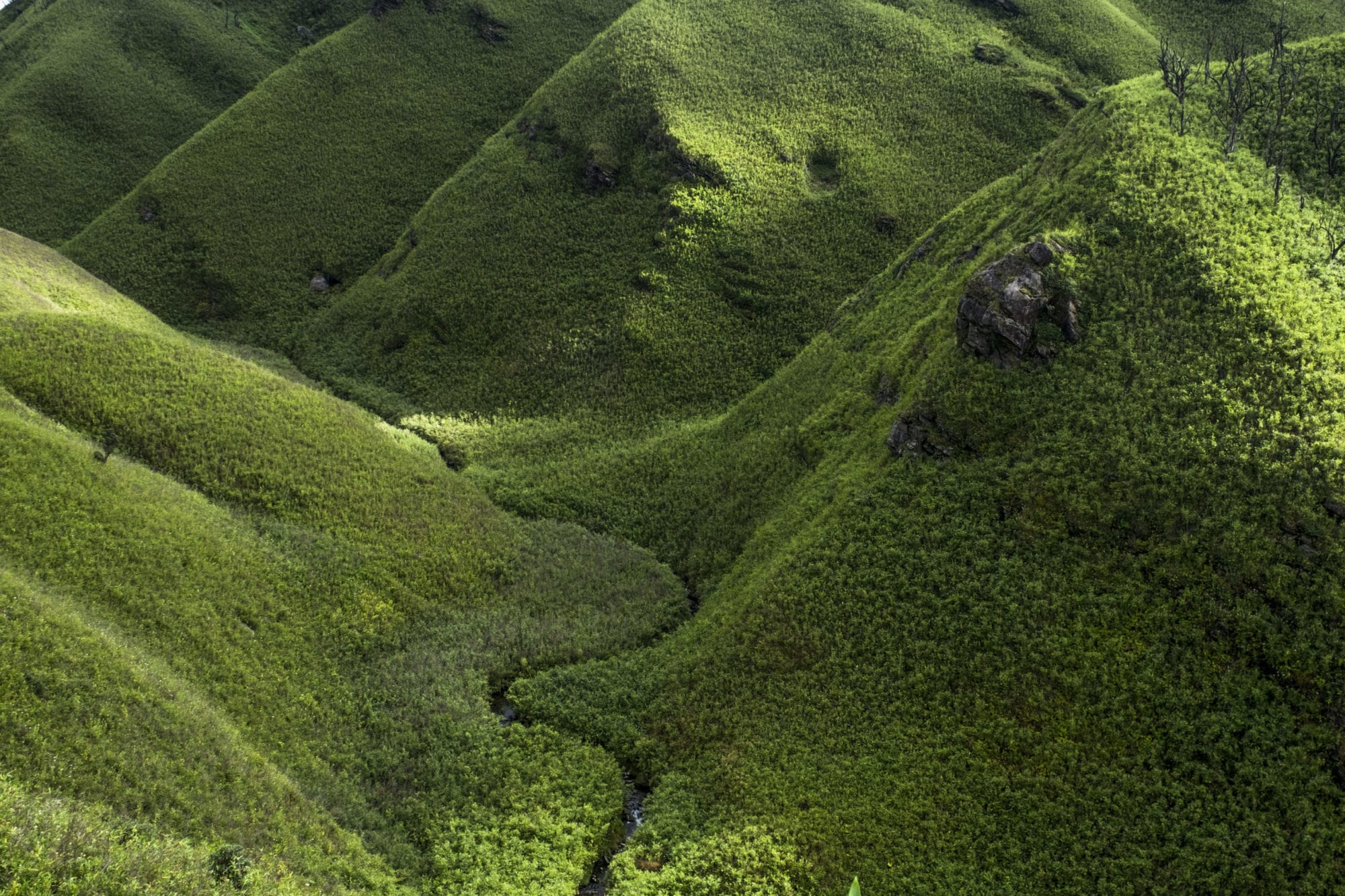
The hills of Dzükou, stretching as far as the eye can see, gently lead you into the horizon. They play a game of hide and seek with the late morning mist, in parts vibrant and colourful with flowers, and at others dark and brooding with blackened stumps of trees, the remains of a forest fire which affected parts of the valley a few years ago. The landscape is difficult to describe, the closest we have seen to it are probably the sand dunes in the deserts of Rajasthan or Nubra in Ladakh, except that these are rolling hills covered in a carpet of green. It is truly magnificent and sublime.
But Dzükou saves her best for the last, and after a walk of about an hour and a half we finally reached the small hut, set up as the Dzükou base camp and it is here that the valley opens up in all her glory. It’s an impossibly surreal and ethereal landscape with gently undulating hills, cut by the meandering Dzükou river, backed by thick forest and mountains reaching up to the sky. It is a scene that conjures up images of divine magic, of a place which should exist only in the minds eye, but somehow lies here before you inviting you to explore her mysteries. In Manipuri, Dzükou apparently comes from the word Dziikou, which roughly translates to dreamlike, and this may be the most appropriate way to describe a place that is rather indescribable.
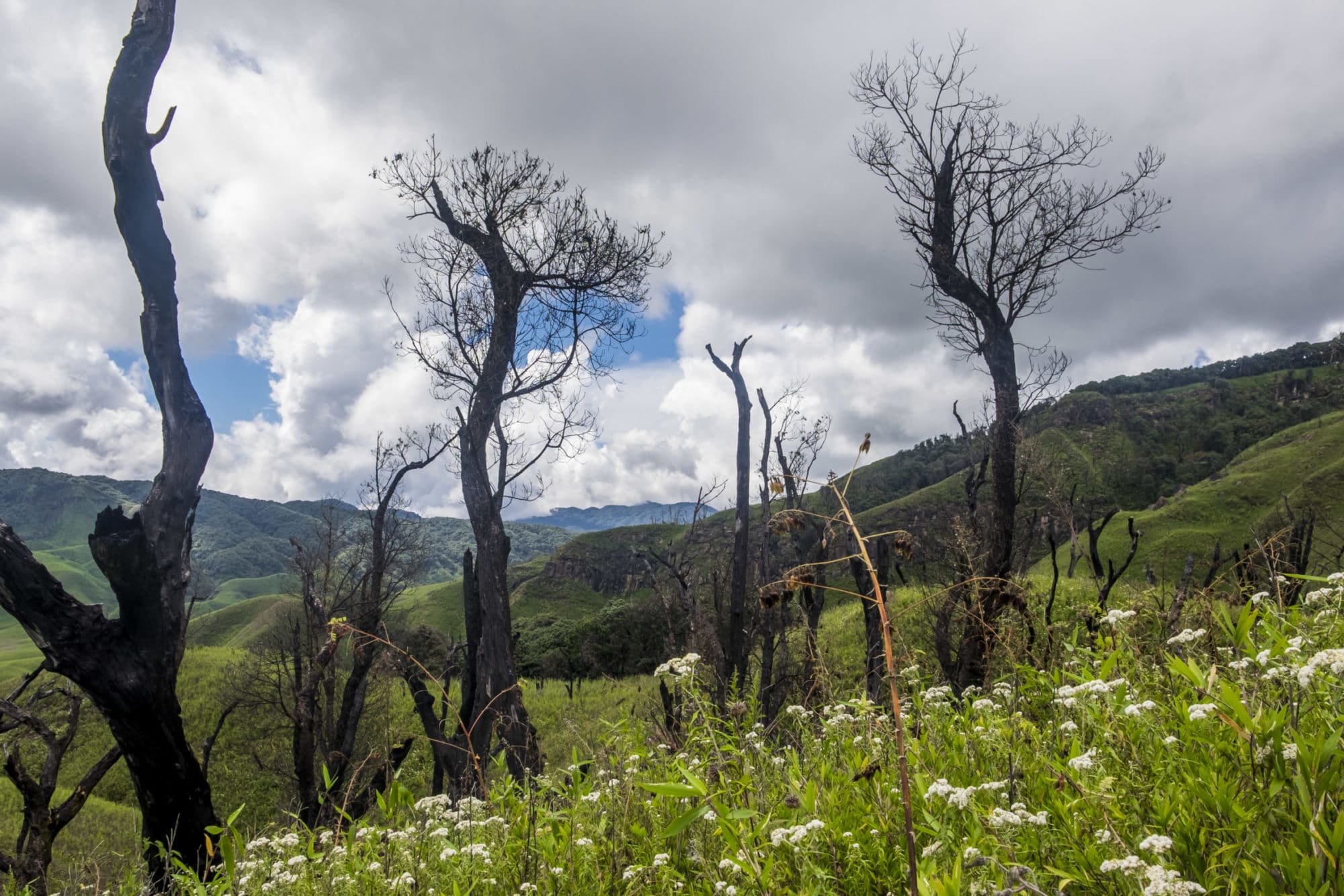
Not much was said on the way back, perhaps everyone was a little tired. But one suspects it was probably because we all had to let sink in and understand, in our own individual manner, what we had seen and experienced. Words fail us, and while the camera will never see what the eye and the heart perceived, we hope that the pictures to it some justice.
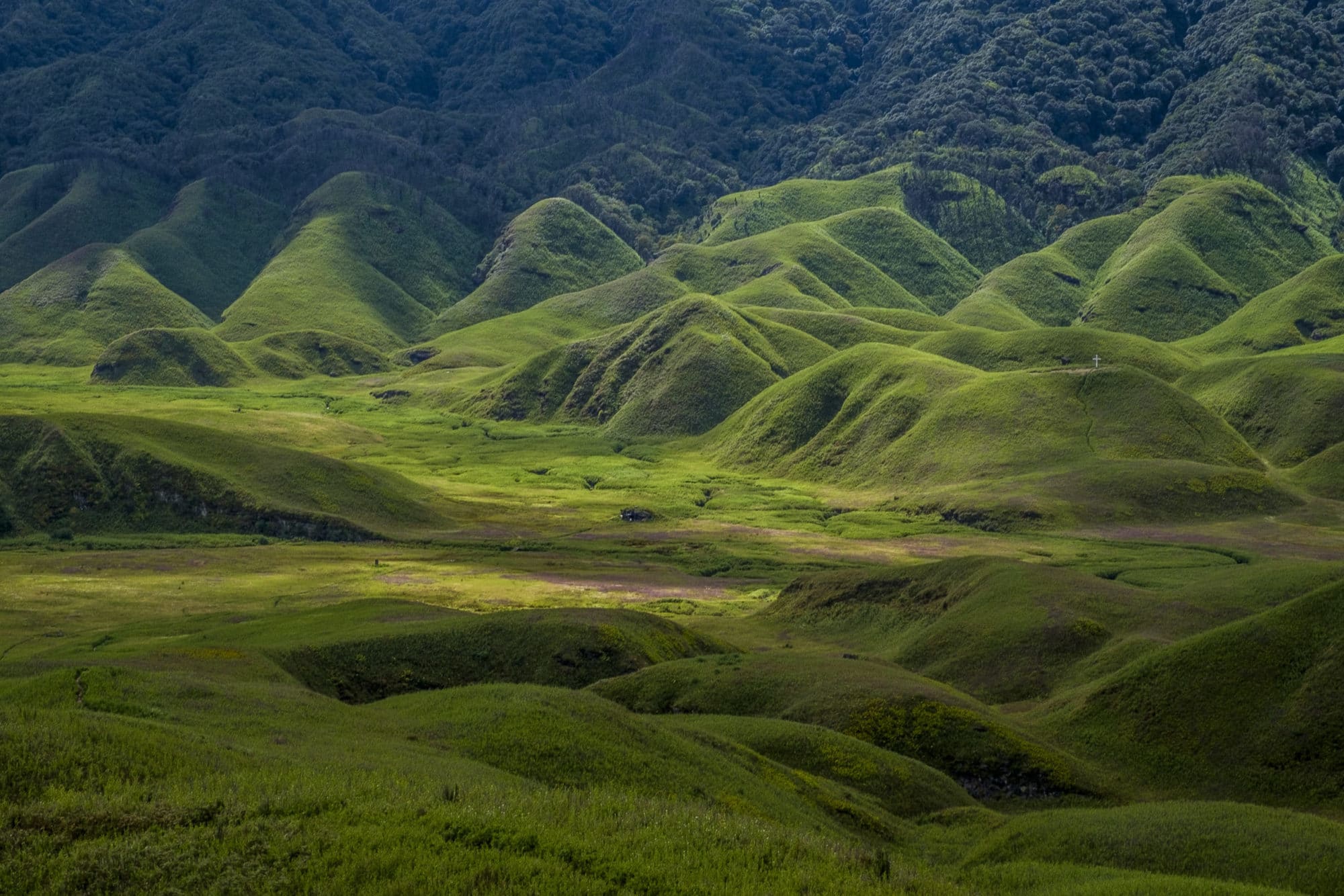
Some Useful Information:
How to get there: Dzükou Valley can be accessed (from the Nagaland side) via a 4 hour trek up from Viswema village which is about 23 kms south of Kohima. A shorter (and harder) way up is also available from Jakhama (Zakhama)Village. We took the way up from Viswema which is ideal for occasional trekkers.
Best time for Dzükou: Whilst Dzükou is beautiful all year round, the best time to visit is May to August when the valley is covered in flowers of various hues. Post monsoon is also beautiful, green and lush, while winters get really cold up in Dzükou with temperatures nearing sub zero levels.
Stay Options: Dzükou can be done as a day trip from Kohima (bear in mind, you will be walking for close to 8 hours), but you also have the option of spending the night up in the valley, at the base camp hut. You can camp out as well. Bear in mind, the hut is simply an empty structure to spread sleeping bags, so if you plan to spend the night remember to carry everything you need. This means tents, sleeping bags, food, water, utensils, and even firewood!
Other Tips: We did Dzükou Valley as a day trip, but if we could do it again we would definitely plan to spend at least a night. The walk is less tiring, you get to spend some time there and explore other parts of the valley, and the sunsets and sunrises out there will probably be pretty epic.
Either way as a day trip or an overnight stay we suggest you get a guide for the trip. The very nice folks at India Trail will organise one for you, sort out transport and even pack lunch! They can also make arrangements for an overnight stay, with all the necessary trappings.
Hi, I am Planning to go by Oct 9th… Will it still be green … Please let me know .. thank you
Hi Jay, yes it definitely will be. The flowers would have reduced though.
What a beauty.. India sure is incredible.. 🙂
Don’t we know it Swarnali! 🙂
lovely……serene……beautiful….. and lovely narration……
Thanks Sudhir. It was a beautiful place!